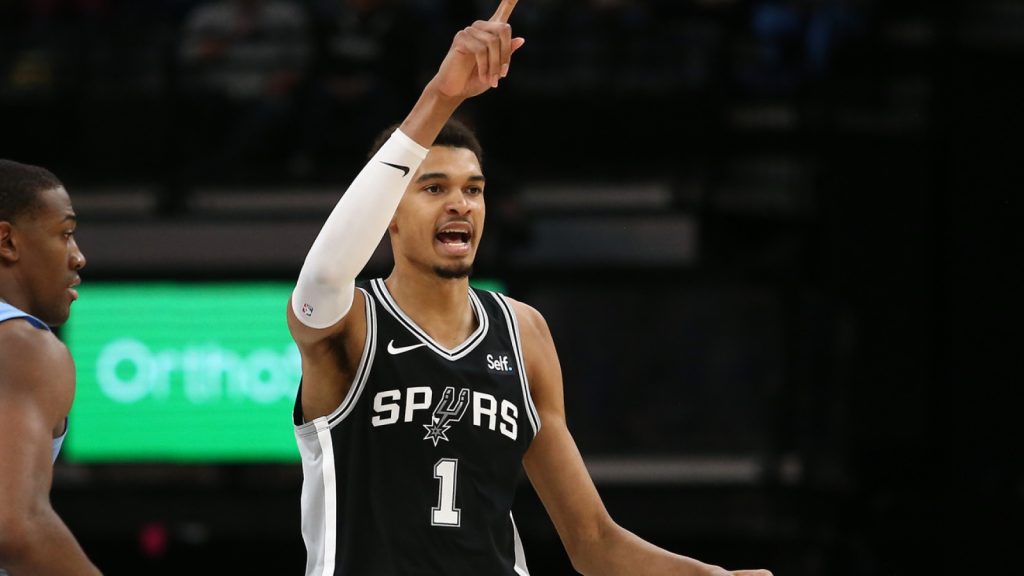The 2024-25 NBA season is approaching rapidly. With the schedules out and rosters essentially set, here are three NBA takes that are worth early consideration.
1. The Emirates NBA Cup will become a significant staple
Last season, the Los Angeles Lakers captured the inaugural in-season tournament title as the dynamic duo of LeBron James and Anthony Davis locked in for each and every do-or-die game.
After losing in the championship game, it was actually the second-place Indiana Pacers who went on to validate their early look as a contender, making their way to the Eastern Conference finals. The Lakers, meanwhile, were ousted by the Denver Nuggets after making it out of the play-in tournament.
Barring injuries and team implosions, midseason winners are likely to begin making noise in the postseason. Dominating the path to the midseason title could really become something teams boast about.
The Emirates NBA Cup is just the beginning to a successful change to the NBA’s schedule. Teams will increasingly chase success in each year’s rendition of midseason competition as the branding and marketing continues to grow both internationally and within TV rights deals.
This is without even mentioning the endless possibilities of colorful changes with jerseys and custom courts. There will be an overall increase in both weight and validity as teams and their fans will very soon want to be more involved with midseason competition.
2. The NBA trade deadline may lose its main event status
The new collective bargaining agreement between the league and its player union massively shifted the landscape of transactions between teams. With the CBA’s stipulations and restrictions for teams over the first or second apron, as well as shrinking the “middle class” of contracts throughout the league, blockbuster trades of the NBA’s past are harder than ever.
For example, teams over the aprons face extreme restrictions on how they can aggregate contracts together to match incoming salaries in trades. No longer can teams with higher salaries, looking to contend, simply combine young players and middling salaries for one large contract in return.
Deals such as the championship-needle-moving Jrue Holiday trade wouldn’t be possible under current rules, as the Boston Celtics (over the second apron) packaged both Malcolm Brogdon’s and Robert Williams’ contracts to match Holiday’s.
These restrictions, along with teams avoiding tanking and more openly going for at least play-in contention, and players seeking to extend their max contracts rather than hitting free agency, have caused a shift in how the trade deadline plays out. Aside from the surprising Kevin Durant and Kyrie Irving trades away from the Brooklyn Nets two seasons ago, trade-deadline activity has more often featured ancillary players rounding out and shoring up rosters.
The deadline’s time has even recently shifted away from midnight to midafternoon. The days of climatically waiting for notifications from top insiders may have passed, with blockbuster buzz and drama shifting away from the trade deadline and to the draft and the opening of free agency.
3. The Victor Wembanyama takeover is ready to commence
Not-so-hot take here; that 7-foot-4 defensive monster out France is showing his potential big time. He’s so good, he’s projected to win two major awards already in Year Two.
Per StatMuse, Wembanyama averaged nearly 23.5 points, 12 rebounds and 4.5 blocks per game after the All-Star break. These were his numbers in a rookie season where he struggled to learn the NBA game at a rapid pace in the first half and never truly had a concrete point guard to feed him the ball.
Now, with newly acquired “Point God” Chris Paul, a whole year of NBA experience and an impressive silver-medal Olympic run under his belt, the Wembanyama takeover seems imminent.
By the All-Star break in 2025, it wouldn’t be surprising if Wembanyama is in discussions for Defensive Player of the Year, a certified All-Star, arguably All-NBA and mentioned in many top-10 player lists in the league.

